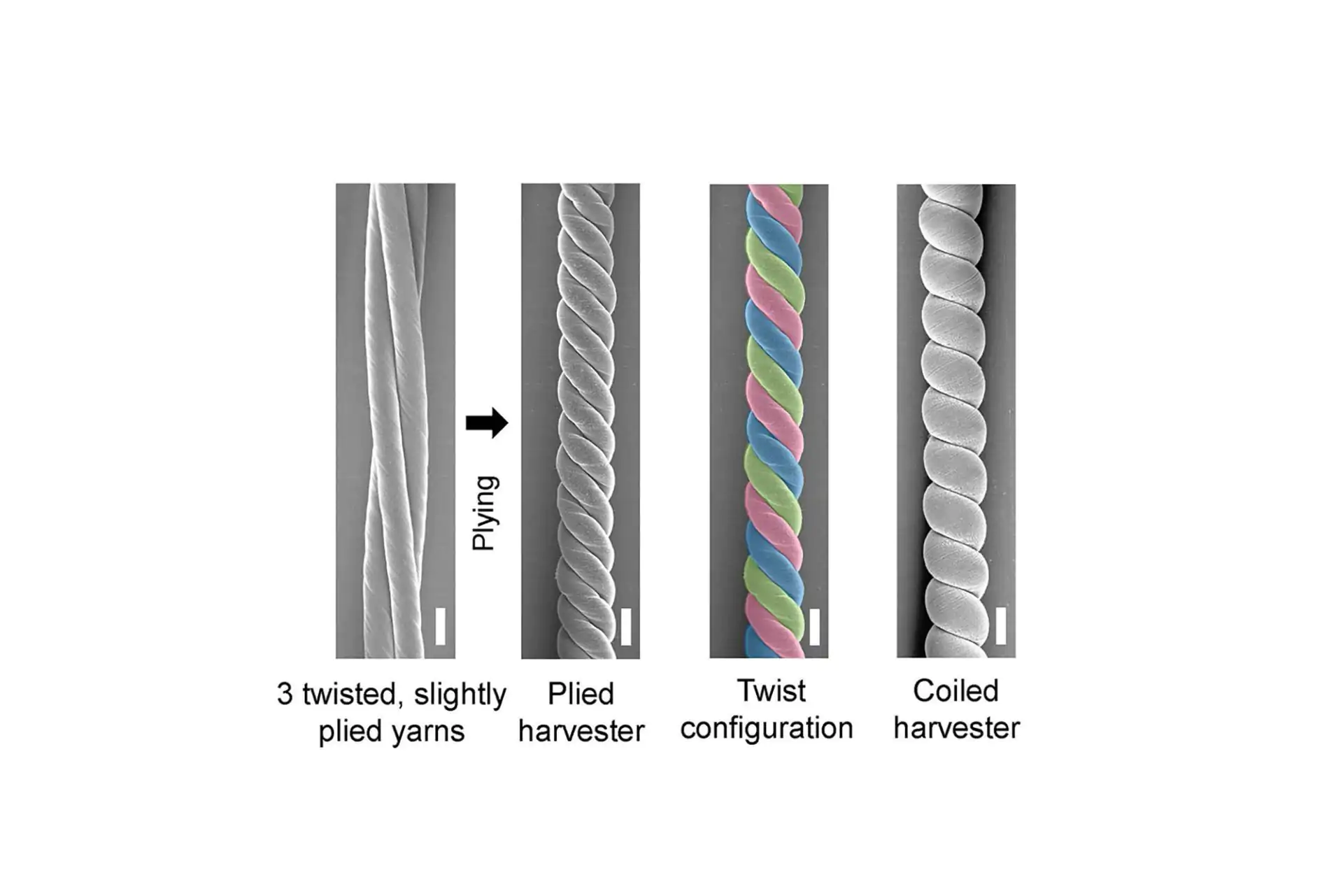University of Texas at Dallas (UTD) researchers and their colleagues have engineered a new and improved type of high-tech yarn called "twistrons," which generates electricity when stretched or twisted, according to a press release by the institution published on Thursday.
The new innovation is much like traditional wool or cotton yarn, only it has the ability to convert mechanical movement into electricity. The discovery is not entirely new. It was first described by UTD researchers in a study published in 2017 but this new version improves on the original by being significantly more efficient..
Twisted and untwisted
These previous versions of twistrons were highly elastic and could generate electricity by being repeatedly stretched and released or twisted and untwisted.
However, in the new study, the research team did not twist the fibers to the point of coiling, focusing instead on intertwining three individual strands of spun carbon nanotube fibers to make a single yarn.
"Plied yarns used in textiles typically are made with individual strands that are twisted in one direction and then are plied together in the opposite direction to make the final yarn," said Dr. Ray Baughman, director of the Alan G. MacDiarmid NanoTech Institute at UT Dallas and the corresponding author of the study.
"This heterochiral construction provides stability against untwisting."
"In contrast, our highest-performance carbon-nanotube-plied twistrons have the same-handedness of twist and plying -- they are homochiral rather than heterochiral," said Baughman, the Robert A. Welch Distinguished Chair in Chemistry in the School of Natural Sciences and Mathematics.

University of Texas at Dallas
The researchers then tested the new yarns through experiments and found that they demonstrated an energy conversion efficiency of 17.4 percent for tensile (stretching) energy harvesting and 22.4 percent for torsional (twisting) energy harvesting. This was significantly more than older models (7.6 percent).
"These twistrons have a higher power output per harvester weight over a wide frequency range -- between 2 Hz and 120 Hz -- than previously reported for any non-twistron, material-based mechanical energy harvester," Baughman said.
Baughman explained that his team managed to accentuate the performance of the plied twistrons by introducing a lateral compression of the yarn upon stretching or twisting. This new process allows the plies to come into contact with one another in a way that affects the electrical properties of the yarn.
Something very unusual
"Our materials do something very unusual," stated Baughman.
"When you stretch them, instead of becoming less dense, they become more dense. This densification pushes the carbon nanotubes closer together and contributes to their energy-harvesting ability."
"We have a large team of theorists and experimentalists trying to understand more completely why we get such good results," he added.
The new yarns can also be used for sensing and harvesting human motion. In one experiment, the team sewed the yarns into a cotton fabric patch that was then wrapped around a person's elbow. Electrical signals were generated as the person repeatedly bent their elbow.
The researchers have now applied for a patent. The study is published in the journal Nature Energy.
Study abstract:
Improved methods are needed for harvesting mechanical energy. Coiled carbon nanotube yarns, termed twistrons, use stretch-induced changes in electrochemical capacitance to convert mechanical energy to electricity. Elongation of the yarn produces such large lateral Poisson’s ratios that the yarns are highly stretch densified, which contributes to harvesting. Here we report plied twistrons, instead of coiled, which increase the energy conversion efficiency of the yarns from 7.6% to 17.4% for stretch and to 22.4% for twist. This is attributed to additional harvesting mechanisms by yarn stretch and lateral deformations. For harvesting between 2 and 120?Hz, our plied twistron has higher gravimetric peak power and average power than has been reported for non-twistron, material-based mechanical energy harvesters. We sew the twistrons into textiles for sensing and harvesting human motion, deploy them in salt water for harvesting ocean wave energy and use them to charge supercapacitors.

